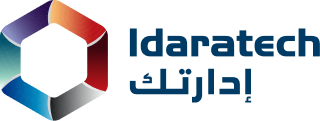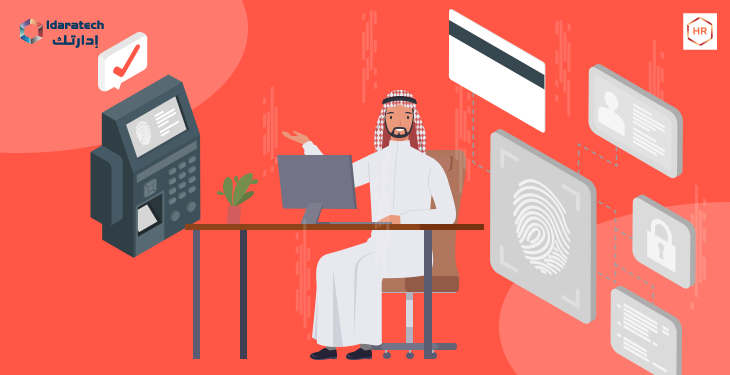In today’s corporate world, time is equivalent to money.
The amount of money employees earn depends on how much time they spend working for a specific company. Therefore, it is crucial to keep track of how much time each employee spends working on the assignments that have been provided to them. The biometric time clock and attendance software are now made possible.
The biometric attendance software is a huge improvement compared to the current online time and attendance tracking systems available on the market.
The old systems weren’t perfect since there were many instances where employees would log in on one another’s behalf or, to put it another way, would display a proxy attendance of someone who hadn’t even arrived at the office.
The primary methods weren’t completely secure because there were numerous instances in which coworkers could log in on one another’s behalf or, to put it another way, display a proxy attendance of a person who hadn’t arrived at the workplace.
The biometric attendance software was created to address these fundamental issues.
Each biometric fingerprint is converted into a special entrance code via a biometric scan that only one person may use. Because their biometric information won’t match, a person wishing to act as a proxy for another employee will be unable to do so.
So, when looking for an attendance management system, what factors should be on your checklist? Let’s have a look!
What is Biometric Attendance Software?

A biometric attendance software is a time and attendance (TNA) system that verifies employees’ identification and keeps track of when they enter and leave the office using biometric technologies. Suppose your business uses a biometric attendance system. In that case, your employees must use the built-in biometric sensor on the time and attendance machine to scan their faces, fingerprints, iris, or hand geometry. The biometric attendance software will record the employee’s arrival and departure times. After gathering this attendance information, it can be used for various tasks, such as generating attendance reports and calculating pay and overtime.
Since biometric attendance systems are generally regarded as more precise and effective than traditional attendance systems that merely rely on credentials like badges or ID cards, the time saved by using them can be leveraged to raise employee morale, lower costs, and increase employee productivity.
Businesses can also save time and money using biometric attendance, particularly if they have many employees working various shifts or times of the day.
Biometric attendance applies to many businesses, including manufacturing, construction, hospitality, retail, and more. A biometric attendance software uses an employee’s bodily traits to identify them, making it impervious to theft and tampering. Businesses may confirm that every employee supposed to be at work is there with a quick face or fingerprint scan, removing the chance of buddy punching, proxy attendance, or fraud.
How does Biometric Attendance Software works

As previously mentioned, a biometric attendance software uses a worker’s fingerprint to allow them to clock in and out of their workplace. Every employee’s fingerprint is scanned and mapped out using various system-defined locations.
After plotting against a graph, these coordinates are recorded in the system. Every time a worker places their finger, the coordinates are mapped and compared against the previous image, and only if there is a match is the entry timed.
Numerous different coordinates may be mapped from a single fingertip. The most remarkable feature is that each of these coordinates is distinct and cannot be duplicated from another fingerprint. This makes it nearly impossible to reproduce a fingertip. This is the benefit of a biometric attendance software that stands out the most.
Best Features of Biometric Software
biometric attendance software are available in various configurations, allowing organizations to choose the best suits their needs and requirements. However, every biometric attendance system must include a few essential components. These capabilities include the ability to save and retrieve data on employees and their attendance records, as well as the capacity for seamless integration with the current payroll service and time clock. The capability of storing and retrieving data about employees, as well as their attendance records, is one of the other characteristics. The following critical features are often present in a biometric attendance software:
1. Fingerprint templates:
When purchasing biometric attendance software, this is another crucial factor that needs to be considered. The fingerprint template capacity indicates the number of punches we can imprint at once. Any biometric attendance system should be favored if it can store more than 200 fingerprint templates. The number of employees we have in a certain building or store should be considered.
2. Access Management:
Biometric systems can be used for security purposes, such as limiting access to restricted areas of the building, in addition to time-tracking systems. Look for gadgets that include integrated access control features. Systems that are integrated improve both the organization’s productivity and security.
3. Amount of users:
There must be no lag in the biometric attendance software. The business would fluctuate based on the number of employees who were working. It must therefore integrate with the current HRMS system.
In this manner, the attendance system will only record the punch-ins and punch-outs of working personnel. Additionally, there is no user cap if the system is online or in the cloud. Therefore, even the most established businesses can use this application or program without being concerned about user limitations or slowness.
4. Information from several sources:
Employees may clock in via the Employee Self Service, HR users may import attendance from text or excel files, or data may be imported from another database. Attendance data may come from Time Attendance or Access Control devices.
5. Syncing your calendar:
Additionally, a biometric attendance software can be linked with online calendars like Outlook, Google Calendar, and others. This communicates a team member’s availability to everyone. Calendar connections are extremely important for remote workers, where it is easy to verify someone’s presence using a shared calendar quickly.
6. Backup of data:
Even if you’re employing a cutting-edge, interactive biometric attendance system, backups are required. You will undoubtedly receive this functionality. It wasn’t included in all attendance tools earlier.
This was not how the traditional fingerprint biometric attendance software worked. Based on regular physical entries, its backup was uncertain for larger businesses.
But that’s no longer a concern. A function built into the virtual biometric tool is a regular backup. Administrators, accountants, and reporting managers can therefore review and keep an eye on data sheets and charts whenever they like.
7. Zero maintenance:
Numerous low-quality biometric time and attendance solutions are available on the market. With a guarantee period, a high-quality biometric solution will require no ongoing maintenance. Therefore, it is recommended that a customer only purchase biometric attendance devices with low maintenance costs. The easiest method to make sure of these things is to carefully read customer reviews and double-check whether the biometric gadget has a warranty period.
8. Reporting and Business Intelligence:
Integrating business intelligence into time and attendance solutions provides a platform for assessing business performance concerning time. These technologies can gather information regarding employee attendance, examine the results, and produce a report. Data insights are presented in reports in a visually informative style, and reports can then be distributed throughout an organization.
9. Employee self-service:
Your attendance management system will never be the same due to self-service. Instead of checking in at the office entrance, your employees can now sit at their desks (on-site or remote) and log in using an app or browser. Self-compliance, leave requests, and adjustments to attendance records can all be made without consulting HR or a manager.
10. Web portal assistance:
This is one of the most crucial factors before purchasing any biometric time and attendance solutions. It is highly advantageous to have a web gateway that can broadcast attendance reports, payroll administration, and employee check-in and check-out times. These are the elements that a good payroll management system for human resources should have. The availability of personalized reports we can obtain in real-time is one of the additional characteristics we can search for in a fingerprint attendance system. At the end of the month, we can review these reports to see if employees were present.
11. Wi-fi connectivity:
Connectivity via wi-fi offers two benefits. First, it doesn’t require any physical medium because it connects directly to the computer. The biometric time attendance system is also becoming simpler to use and navigate. For high-end enterprises that seek simple, clutter-free solutions, the convenience of an operating system is crucial. The internal wi-fi system adds to the overall cost of the solution, but an organization must insist on it because it requires no maintenance and is simple to use.
12. System integration with payroll management:
The system’s data is essential for enhancing the effectiveness of HR payroll administration systems. The HR team can more easily and accurately calculate employee compensation when they have accurate attendance information for the workforce. Choose technologies that communicate information straight to HR payroll software to simplify payroll calculations.
Conclusion
Changing to a digital workforce management and monitoring system can improve your company’s workflow. You’ll be able to cut down on spreadsheet work and manual clocking in and out. Additionally, it will make it simpler for you to monitor employee data and maintain a happy workforce.
Ensure the next biometric attendance software you implement is seamless, error-free, and simple. It must emphasize employee wellness, provide real-time tracking, and have several integration features. The ease and transparency of each punch in and out add value to the analytical results.
Your attendance management system could be a blessing for your business and your employees by converting a once-complex process into an easy-to-monitor and simple activity with the clever application of cutting-edge digital assets.


